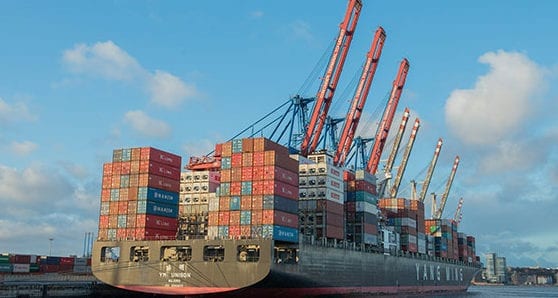 Canada’s merchandise trade balance with the world went from a slight deficit of $55 million in June to a $1.1-billion deficit in July, says Statistics Canada.
Canada’s merchandise trade balance with the world went from a slight deficit of $55 million in June to a $1.1-billion deficit in July, says Statistics Canada.
The federal agency reported on Wednesday that imports rose 1.2 per cent in July, while exports fell 0.9 per cent.
“Following a 4.0 per cent decrease in June, total imports rose 1.2 per cent to $50.9 billion in July, with gains in six of 11 product sections. In real (or volume) terms, imports were up 2.3 per cent,” said StatsCan.
“Imports of consumer goods (+2.4 per cent) contributed the most to the increase, driven by higher imports of pharmaceutical products (+19.7 per cent), which hit a record high in July, mainly as a result of gains in imports from Switzerland and Germany.”
After a strong decrease of 5.0 per cent in June, total exports fell again in July, down 0.9 per cent to $49.8 billion. Despite this decline, six of 11 product sections recorded increases, and non-energy exports rose 0.5 per cent. In real (or volume) terms, exports edged down 0.1 per cent, explained the federal agency.
“Following a 6.7 per cent decline in June, energy product exports fell by 6.7 per cent again in July, as a result of lower crude oil exports (-7.7 per cent). As was the case in June, crude oil export prices (-7.4 per cent) were behind the decrease in July. Crude oil export volumes, which peaked in June, remained at a high level in July, edging down 0.3 per cent,” it said.
Statistics Canada said exports to the United States fell 1.1 per cent in July, while imports from this country were up 1.6 per cent. Following a strong surplus in May and June, Canada’s trade surplus with the United States narrowed to $4.6 billion in July.
“As we expected, Canada’s trade balance took a dive into the red in July, playing into fears that quarter two’s big growth driver, exports, would go missing in quarter three,” said Avery Shenfeld, an economist with CIBC Economics, in a commentary note. “The move to a $1.1-billion deficit, from a near balance the prior month, was driven by a 0.9 per cent drop in exports and a 1.2 per cent rebound in imports. Fortunately, most of the export drop was due to prices, as real exports, which feed into GDP were closer to flat.
“Import volumes registered a solid gain led by consumer goods and aircraft. Energy exports were the story on the drop in outbound goods. Not a great story for net trade, but the imports signal a better pace for domestic demand.”
Mario Toneguzzi is a Troy Media business reporter based in Calgary.
The views, opinions and positions expressed by columnists and contributors are the author’s alone. They do not inherently or expressly reflect the views, opinions and/or positions of our publication.

